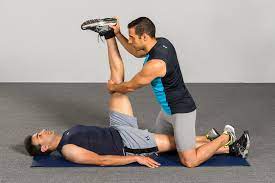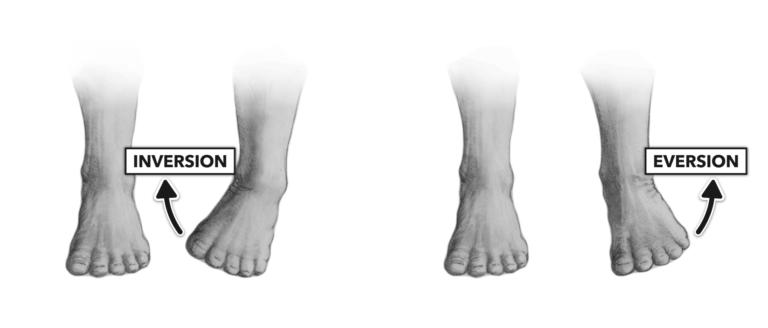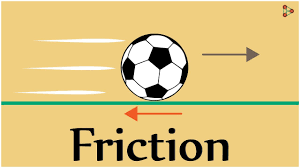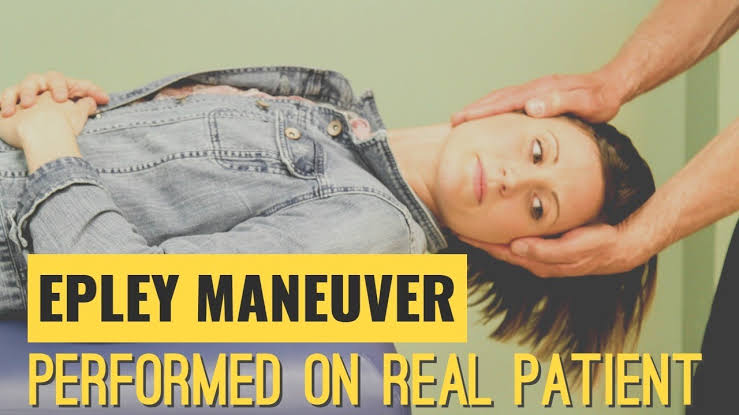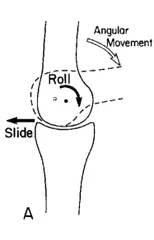Contract-relax stretching
Table of Contents
What is Contract-Relax Stretching?
- Contract-relax stretching is a form of PNF stretching. PNF stands for proprioceptive neuromuscular facilitation
- contract-relax stretching means the use of natural reflexes to further the stretching response. In contract-relax stretching, first, isometrically contract the opposite muscle. Then after contracting the opposite muscle, try to further stretch the excepted target muscle. If trying to stretch the biceps: you should isometrically contract the triceps muscle reverse to the biceps muscle for 10 seconds. Then, you would relax the triceps muscle and try to further stretch the biceps muscle by straightening the arm. This kind of stretching can be performed on each muscle with an antagonist or muscle that performs its reverse motion
- the stretching response is approved by the physiological reaction reflex. .if trying to stretch the triceps you would isometrically contract your biceps reverse to the triceps for 10 seconds. Then you’d relax your biceps and straighten your arm to try to stretch your triceps muscle.
The neurophysiology behind contract-relax stretching
- Contract-relax stretching uses one of the simplest reflexes in the human body to give a deeper stretch. Remember: reflexes are subconscious, so the mind doesn’t have to work to make the reflex happen, reflex is just a natural occurrence. The physiological aspect behind contract-relax stretching is reciprocal inhibition. the body knows that when a muscle on one side of the joint is contracting to shorten the other side of the joint needs to relax and lengthen to give the grant to occur contract relax movement. This phenomenon is termed reciprocal inhibition.
- stretching of the hamstring muscle:
- In contract-relax stretching, if stretching the hamstring you should contract the quadriceps muscle before stretching the hamstring muscle. , the quadriceps muscle would connect to make the muscle spindle send a signal to the body for stretching the hamstring muscle. This signal reaches the spinal cord and sends two signals back outside to the body
Reciprocal inhibition
- Reciprocal inhibition is what occurs in the Target muscle when the opposing muscle is contracted voluntarily in the form of decelerated neural activity in the target muscle. reciprocal inhibition happens when the reversing muscle is contracted in order to maximize the reversing muscle’s contraction force, and the Target muscle relaxes. This relaxation of the target muscle is a conclusion of the decrease in neural activity and the increase of inhibition of proprioceptive structures in the target muscle. Inhibition of the electrical activity in the stretched Target muscle occurs due to the neurons’ continuation of firing in the target muscle, the contraction of the antagonist’s muscles would be resisted and diminished by the force of the Target muscle continuing to receive signals to contract. On the spinal level, the afferent fibers arrive at the spinal cord and give off collateral branches that connect with interneurons in the spine, which send signals to the alpha-motoneuron in the Golgi tendon organs of the Target muscle. The effect of this connection is inhibitory and creates a relaxation of the Target muscle
- The mechanism of proprioceptive neuromuscular facilitation is the way in which the Target muscle and its antagonist’s muscles work together. When one muscle contracts, the other muscle relaxes and is prohibited in order to prevent the muscles from working against one another. This mechanism potentially explains part of what is happening during the Contract relax antagonist contract method of PNF. In the Contract relax antagonist contract method, the contracting muscle in the “antagonist-contract” part of the technique, brings about the reflex and inhibits the Target muscle. This inhibition of the Target muscle along with the shortening contraction of the antagonist’s muscle, give grants the muscle fibers of the Target muscle to elongate even further, creating a greater stretching force for the Target muscle and producing a larger inhibitory influence on the Target muscle. The interneuron that innervates the alpha-motoneuron, which is near the Target muscle, creates the neural activity in the Target muscle to decrease and leads to more stretching of the Target muscle. this reflex affects the Target muscle and needs to be done in order to prove reciprocal inhibition is behind the effects of PNF stretching.
- To get a deeper stretch, contract-relax stretching is one of the human body’s most basic responses. it just happens. Reciprocal inhibition is the physiological process that creates contract-relax stretching. When a muscle on one side of a joint contract shortens, the opposing side of the joint relaxes and lengthens to allow this motion to happen. Reciprocal inhibition is the term for lengthening and shortening.
- One signal comes right back to the muscle that sent it to the quads and says “keep on shortening and getting tighter” This sound is sent by an alpha motor neuron.
- The other signal goes to the reversing muscle hamstrings and says “Relax the other side needs to get shorter!” This signal comes from an inhibitory interneuron connecting to the alpha motor neuron of the hamstring. Therefore, this inhibitory interneuron is prohibiting the hamstring from contracting. this turn makes the muscle fully relaxed.
- so then, when the quadricep muscle finishes contracting, and suddenly goes into a deeper hamstring stretch, the hamstring muscle is more relaxed than before and can allow for more movement
Autogenic Inhibition
- Autogenic Inhibition is what occurs in a contracted or stretched muscle in the form of a decrease in excitability because of inhibitory signals sent from the Golgi tendon organ of the same muscle. This tension causes the activation of Ib afferent fibers within the Golgi tendon organs. Afferent fibers send signals to the spinal cord where the stimulus creates the activation of inhibitory interneurons within the spinal cord. These interneurons put an inhibitory stimulus upon the alpha motoneuron, decelerating the nerves’ excitability and decreasing the muscles of the efferent motor neuron runs. It is theorized that this reflex occurs as the body attempts to spread the workload constantly across the motor unit within the muscle, assisting the nonparallel contracting of the body in preventing specific motor units from fatiguing. This chain reaction causes the target muscle to relax, which is one of the theories behind the increased elongation of the muscle fibers during the contract-relax and contract-relax antagonist contract methods of PNF stretching.
- Autogenic inhibition relies on the body’s self-regulatory mechanisms of the Golgi tendon organ in order to protect structures. However, the contract-relax and contract-relax antagonist contract is the PNF stretching method, contraction of the Target muscle during stretching and contraction of the antagonist’s muscle takes advantage of this mechanism to decrease muscle tension, allowing for elongation of the muscle fiber sand allows the contract-relax antagonist contraction method of PNF stretching to take advantage of the viscoelastic properties of the musculotendinous units, permitting the muscle to “creep” and elongate, thus increasing the ROM of the patient.
- Although, there is uncertainty about the part of the Golgi tendon organ plays a role in PNF stretching and long-term improvements the Golgi tendon organ has a major role in the inhibition of muscle fibers, the duration, and even the activation of this inhibition, after contraction, the activation of the inhibitory neurons of the Golgi tendon organ is low or nonexistent, showing that the inhibitory signal of the Golgi tendon organ is weak after contraction and the muscle activation generally indicates movement or/and exercise, in which muscle inhibition would be checking. other thing needs to be done like muscle activation during PNF stretching and regarding the duration of the muscle’s inhibition after PNF stretching.
How does contract-relax stretching differ from static stretching?
- Contract-relax stretching varies from static stretching in little ways, but neurologically in one fundamental way. Static stretching depends on the Golgi tendon organ, not the muscle spindle as the signal messenger. The Golgi tendon organ. generate by observing tension in the reverse response of the muscle spindle. The Golgi tendon organ inhibits the agonist muscle contraction and permits the antagonist muscle to contract more. this means that if contracted the quadriceps muscle, would turn off /relax the quadriceps muscle, and make the hamstrings turn on and start contracting. This method is known as autogenic inhibition rather than used reciprocal inhibition in contract-relax stretching. This Golgi tendon organ gives a response after about 7-10 seconds when the muscle tension has begun to increase in the muscle when it is stretched by the therapist.
The Gate Control Theory for contract-relax stretching
- The gate control theory is what occurs when two kinds of stimuli, such as pain and pressure, activate their respective receptors at the same time. Peripheral pain receptors are connected to either un-myelinated or /and small myelinated afferent fibers while pressure receptors are connected to larger myelinated afferent nerve fibers. any type of afferent fiber connects to the same interneurons in the spine, and because the pressure of the afferent nerve fibers is larger and myelinated the pressure signals make afferent nerve fibers to the spine before the pain signals start to do motion when they are stimulated simultaneously. The inhibition of the pain signals happens in the dorsal horn of the spinal cord where the large fibers transmit signals. In contract-relax and contract-relax antagonist contraction, when the muscle is stretched above its active ROM, the patient is then told to resist this stretch, and then the target muscle is stretched even further.
- A large force and stretch are produced in the elongated muscle when the patient resists the stretch. This large force is sensed as noxious stimuli and is seen as potentially damaging, which invites the Golgi tendon organ to activate in an effort to inhibit the force and prevent injury. As this process is repeated with a consistent protocol, the nociception, or/and cause of the amount of inhibition of the Golgi tendon organs, decreases as it becomes more addicted to increased muscle and tendon length, as well as increased force. The Golgi tendon organ adapts and decreases inhibition, permitting the muscle to produce a greater amount of force; however, this may increase the risk of injury. With increased muscle length comes the ability to produce greater force because of the length-tension relationship. With increased ROM and decreased Golgi tendon inhibition, the muscle may be able to increase its strength and force production.
- In both contract-relax and contract-relax antagonist contraction of the PNF stretching, the gate control theory is a possible mechanism for gaining the benefits of the technique. The gate control theory argues that when the muscle is stretched forcefully, its natural Range of motion, the Golgi tendon organs are activated in an attempt to reduce injury. In PNF stretching, not only are the muscles and tendons stretched, but they are also contracted at this elongated length, decreasing the nociception, or pain that is sensed that causes inhibition, produced by the Golgi tendon organs. The Golgi tendon organ adapts to the increase in length and force threshold, which allow for greater force production
- The great short-term benefits of contract-relax stretches. 7 days of contract-relax stretching to the neck resulted in large accelerates in the range of motion, but the effects instantly decreased when the stretching was discontinued. While there is no one tell that contract-relax stretching is not effective, contract-relax stretching may not be as effective as static stretching. compared static stretching. contract-relax stretching has fluctuating angles and controlled angles. The results show that with controlled angles, there was no difference between the contract-relax and static stretching methods. But, when permitted to push the point of pain in a range of motion, then contract-relax stretching should have larger joint angles. Even with larger joint angles and bigger ranges of motion, the electromyography responses or muscle activity were not different between the contract-relax and static stretching methods.
Effect of the contract-relax stretching
Effects of PNF
- Proprioceptive neuromuscular facilitation is a stretching method that is utilized to increase the Range of motion and flexibility. Proprioceptive neuromuscular facilitation elevates the range of motion by elevating the length of the muscle and elevating neuromuscular efficiency. Effects can stay last 90 minutes or more than that after the stretching has been completed. The duration of these effects can alter because of various things, like changes in the percentage of maximum voluntary isometric contraction asked for and the duration of the contraction of the Target muscle during PNF stretching. PNF stretching is usually performed with a 100% maximum voluntary isometric contraction, which can possibly lead to a contraction-induced injury and muscle soreness.
- Lower percentages of maximum voluntary isometric contraction might reduce these risks. This contraction has been allowed to produce better effects when held for a total of 3–10 seconds, while a total time of six seconds is preferred. It is essential to know why six seconds is preferred and if there is any benefit to a longer or /and shorter contraction. There are also observable differences in the range of motion due to Proprioceptive neuromuscular facilitation found between genders and age groups. There is an increase in ROM and flexibility which is found regarding each second fluctuation but to many different degrees.
- Literature looking into each of these variations of PNF stretching, and just PNF stretching on ROM, While there was a large amount of literature that solely looked at changes in ROM over time, or after one session of PNF stretching, there was a limited amount found regarding the effects of the alteration on ROM. This was also true in regard to the impacts of Proprioceptive neuromuscular facilitation on athletic performance and muscular strength. Athletic performance was generally found to decelerate when Proprioceptive neuromuscular facilitation stretching was applied before exercise, and elevate when applied independently of exercise, or after exercise was completed
Effects on Muscular Function
- Stretching has beneficial to improve performance and decrease the risk of injury during exercise, as well as improving Range of motion and function following an injury. proprioceptive neuromuscular facilitation stretching prior to exercise has been found to decrease muscle performance when maximal muscle effort is required during running, plyometrics, cutting, weight-lifting and other high-intensity exercises also showed a decrease in strength, power output, and muscle activation. and a significant decrease in vertical jumping, high jump, and power, as well as a decrease in ground reaction time and high jumping, following proprioceptive neuromuscular facilitation stretching.
- Although proprioceptive neuromuscular facilitation may decrease performance in high-intensity exercises, it has been found to improve performance in submaximal exercises such as jogging. significant increase in both stride rate and stride length after a five-week proprioceptive neuromuscular facilitation stretching protocol in professional soccer players. PNF stretching is similar in effectiveness to weight training in improving muscular strength; however, a significant increase in athletic performance in untrained females was also determined as well. Vertical jump and throwing distance increased more than double in those people who use the PNF stretching rather than those who use the weight training exercises. The PNF method completed stretches two times a week for eight weeks. Each session subsisted of 3 sets of six repetitions against the maximal force on both the lower extremities and upper extremities. This PNF technique figure out to improve force production along with functional movements in untrained individuals.
- These effects of stretching can last longer than 90 minutes. PNF is an effective technique for contract-relax stretching if it is applied after exercise and done at least twice a week to ensure a lasting range of motion and sustained beneficial effects.
- when the contract-relax stretching is done and exercise should start again then decrease muscle strength, endurance, power. This may be due to the muscles being stretched too far away from their capacity to tolerate the stretch, causing inhibition following the stretching. However, the athletic player who does jogging at 80% recovery of maximal effort beyond a five-week period. PNF is even more beneficial than strength training in increasing strength and athletic performance in untrained individuals over an 8-week period and 16 sessions per week 2 sessions; muscle power, strength, and ROM increased during the protocol. PNF exercises done before exercise will decrease performance in the short term, however, the long-term effects may be similar
Effects on ROM
- the effectiveness of PNF stretching on hamstring flexibility performed with exercise or without exercise. Every stretching method was applied for five minutes with a 30-second hold after 60 minutes of exercise or no exercise. The results showed that those who exercised and received PNF stretching experienced more of an acceleration in flexibility when compared to the baseline group muscle without exercise and proprioceptive neuromuscular facilitation. However, there is no difference observed in any type of stretching
- the examination of the effects of three methods of stretching on the hamstring and gastrocnemius muscles is more improvable. These three stretching techniques included static stretching, dynamic stretching, and the contract-relax method of PNF. Each patient was assigned to one of the three treatment sessions and received three treatments in a week. Three measuring Range of motion tests were performed on all patients; before the treatments began, after eleven rounds of the treatment, and after all the rounds of treatment had been completed. any of the treatments have been found to produce significant improvements when comparing the beginning test to measure the range of motion to the end test. It turned out that the longer the treatment time, the less significantly the results differed among the three treatments of stretching.
- the patient was randomly assigned to four treatments session. These four treatment session groups represented each group of target muscles being stretched; the gastrocnemius, the ankle dorsiflexors, the hip adductors, or the hamstrings. The gastrocnemius, hamstring, and adductor groups received a session of the contract-relax method of PNF, while the ankle dorsiflexor group received a ballistic stretching method. The ankle dorsiflexor group was turned to use the contract-relax method afterward. Flexibility was increased more with the contract-relax method rather than with the ballistic stretching method for the ankle dorsiflexor group.
Conclusion
- PNF stretching techniques of both the contract-relax and contract-relax antagonist contraction methods are effective in improving and maintaining ROM, increasing muscular strength and power, and increasing athletic performance, especially after exercise. However, proper protocol and consistency must be followed to obtain and maintain the benefits of PNF techniques. Four theoretical mechanisms were scheduled as being responsible for these benefits, although there is little observational evidence to support these mechanisms.
FAQs
- Which mode of stretching involves a contract-relax technique?
the other term of the PNF technique is the contract-relax stretch. It is almost corresponding to hold-relax, except that instead of contracting the muscle without moving, the muscle is contracted while moving. This is sometimes termed isotonic stretching
- how does contract-relax stretch work?
The physiological aspect behind contract-relax stretching is reciprocal inhibition. Your body knows that when a muscle on one side of the joint is contracting or shortening and the other side of the joint needs to relax lengthen to allow this motion to occur. This is known as reciprocal inhibition
- Which protein helps the muscles contract and relax?
the muscles are containing fibers called myosin. Depending on how you need to use your muscles, the myosin fibers either tighten up and shorten or/and loosen up and stretch out. Myosin is also important for muscle contractions like the heartbeat which appear at regular intervals.
- Which stretching technique is most commonly connected with an injury?
Ballistic stretching can increase the range of motion quickly but has a higher risk of injury rather than other effective techniques f stretching.
- Why the muscle contraction is important?
muscle contraction fulfills a few other important functions in the body, like posture, joint stability, and heat production. in the Posture, like sitting and standing, is maintained as a result of muscle contraction.

